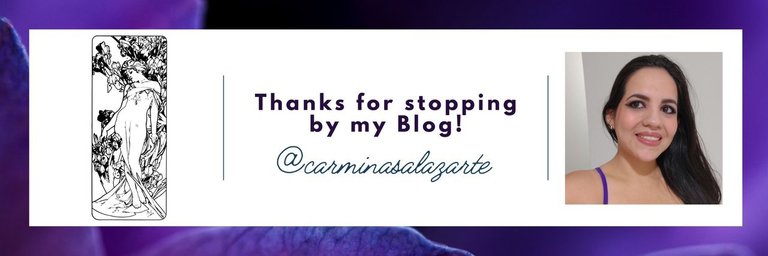From Kandinsky to School: A Different Kind of Art Class [ENG/ESP]





Greetings to everyone in the Daily Blog community! I hope you're having a great week. Today I'm joining you to share a new classroom experience with you. This time, I'm sharing a little bit about what we did in the Drawing Workshop. This week, we worked on some basic drawing concepts. To do this, the students learned some important concepts that will be relevant when drawing: ease, stroke, pencil grip, body posture, etc. We also discussed issues related to the artist in question: the intention of the drawing, gesture, expression, themes, and more.
¡Saludos a todos en la comunidad de Daily Blog! Espero que estén teniendo una gran semana. El día de hoy me uno por aquí para compartir con ustedes una nueva experiencia en el aula de clases. En esta ocasión, les cuento un poco de lo que hicimos en el Taller de Dibujo. Para esta semana estuvimos trabajando algunas nociones básicas sobre el dibujo, para ello, los chicos conocieron algunas conceptos importantes que tomarán relevancia a la hora de dibujar: la soltura, el trazo, el agarre del lápiz, la postura del cuerpo, etc. También cuestiones que tienen que ver con el artista en cuestión: la intención del dibujo, el gesto, la expresión, los temas y demás.





I really like introducing these topics with Kandinsky, the Russian painter who laid some of the foundations for Lyrical Abstraction and who also wrote "Point and Line on the Plane." This book is quite comprehensive as it explains how these elements (the point, the line, the shapes generated by those lines, the plane, etc.) can indicate and mean different things depending on their style (color, thickness, direction, and movement) and arrangement on the plane (tension, rhythm, balance, imbalance, etc.). We covered all of this over the past two weeks, and to conclude the topic and begin working on other topics, I used an interactive video where, to the rhythm of classical music, they had to "draw" circles, lines, curves, and so on in the air, as if they were conducting an orchestra.
A mí me gusta mucho introducir estos temas con Kandinsky, pintor ruso que estableció algunas de las bases para la Abstracción Lírica y quién también, escribió "Punto y Línea sobre el Plano". Este libro es bastante completo pues nos explica cómo estos elementos (el punto, la línea, las formas que se generan gracias a esas líneas, el plano, etc.) pueden indicar y significar diferentes cosas según su estilo (color, grosor, dirección y movimiento) y disposición en el plano (tensión, ritmo, equilibrio, desequilibrio, etc. Todo esto lo vimos en estas dos semanas y para concluir el tema y comenzar a trabajar otras cosas, utilice un vídeo interactivo dónde al ritmo de la música clásica, ellos debían "trazar" en el aire círculos, rectas, curvas y demás, cómo si fueran directores de orquesta.





They really liked it, and that made me happy because afterward, the little ones did a free production that took into account what they had previously seen in the video. They let their ideas run wild and each one came up with something quite successful. For the older students, we did the same activity with the video, but afterward, we worked with some slides that explained what kind of paintings and drawings were obtained from all of this. The kids were fascinated because they saw drawings and paintings by Kandinsky, Matisse, Hopper, Modigliani, Picasso, Schiele, Rothko, and many others, who served as a reference for what to produce in the future. Giving value to many artistic styles and techniques, because from now on, many things are possible. Finally, my friends, that's all for today. See you next time.
Les gustó bastante y eso me alegró pues seguido de ello, los más pequeños realizaron una producción libre dónde tomarán en cuenta lo anteriormente visto en el vídeo. Dejaron volar las ideas y cada uno hizo algo bastante acertado. Para los más grandes, hicimos la misma dinámica con el vídeo, pero seguido de ello trabajamos con algunas diapositivas que explicaran qué tipo de pinturas y dibujos se obtenían de todo ello. Los chicos quedaron fascinados porque vieron dibujos y pinturas de Kandinsky, Matisse, Hopper, Modigliani, Picasso, Schiele, Rothko y varios más, que les sirvieron cómo referencia para saber que producir en el futuro. Dándole valor a muchos estilos y técnicas artísticas, pues de ahora en más muchas cosas son posibles. Finalmente amigos míos, esto ha sido todo por hoy, nos vemos en la próxima oportunidad.



0
0
0.000
Este post ha sido curado por el equipo de @tattooworld

[Unete a nuestro Trail]
https://hive.vote/dash.php?i=1&trail=tattooworld
You can also delegate using our preconfigured Hivesigner links:
| 10 HP | 25 HP | 50 HP | 100 HP | 250 HP | 500 HP | 1000 HP | 1500 HP | 2000 HP |
Una maravillosa manera de llevar el arte a los niños, no solo en teoría sino haciendo que apliquen los conocimientos para generar sus propias obras.
Felicidades por sacar la magia en esos pequeños artistas.
Saludos 😁 muchas gracias por tus bonitas palabras. Es así, los niños se sintieron emocionados y con ganas de trabajar. Fue interesante ver sus interpretaciones. Un abrazo, gracias por pasar por aquí.
!discovery
This post was shared and voted inside the discord by the curators team of discovery-it
Join our Community and follow our Curation Trail
Discovery-it is also a Witness, vote for us here
Delegate to us for passive income. Check our 80% fee-back Program